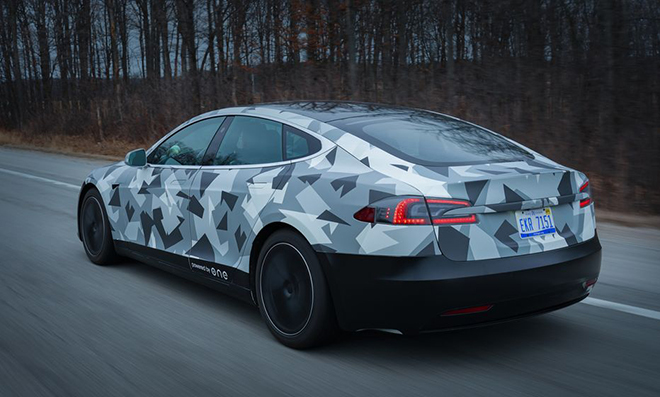A two-year-old Michigan startup, Our Next Energy (ONE), has built a custom battery pack that recently propelled a modified Tesla Model S for 752 miles. John Voelcker, writing in Car and Driver, reports that ONE retrofitted the car with a pack that stores twice the energy of Tesla’s original, and fits in exactly the same space.
“We want to accelerate the adoption of EVs by eliminating range anxiety, which holds back consumers today,” said ONE founder and CEO Mujeeb Ijaz—a battery engineer whose 30 years of experience includes sojourns at Apple, A123 Systems and Ford.
ONE installed its 207.3 kWh pack in a Tesla Model S Long Range Plus. The vehicle’s original pack had a capacity of 103.9 kWh. ONE’s pack is far more energy-dense, but its efficiency (measured in miles per kWh) is roughly the same. That’s an even more impressive feat when you consider that Tesla’s vehicles are some of the most efficient EVs on the road.
ONE drove the modified Model S for about 14 hours at an average 55 mph, on a chilly December day in Michigan, and recorded a range of 752.2 miles. In a dynamometer test, also at 55 mph, the pack delivered an even more impressive 882 miles.
ONE calls its experiment with the Model S a proof of concept for a future battery technology called Gemini, which it hopes to put into production after 2023. The company says its battery chemistries are “safer” and “sustainable,” and use a “conflict-free supply chain.” ONE uses a lithium iron-phosphate (LFP) chemistry, which historically has lower energy density than cobalt- or nickel-based chemistries.
ONE recently hired Steven Kaye—previously of Wildcat Discovery Technologies and Apple—as CTO to lead cell research efforts, with a focus on bringing to market high energy chemistries and working with cell manufacturers to accelerate scale-up of their technologies’ path to market.
The company’s first battery product, Aries, is scheduled to go into production late this year. Aries features prismatic LFP cells, and uses a structural cell-to-pack architecture with no separate modules, which is meant to mitigate the energy-density disadvantage of the LFP cells.
For Gemini, the company told Car and Driver that it plans to supplement the lower-cost LFP cells with special “range-extender” cells that will kick in for just one percent of the vehicle’s duty cycle. These will use a graphite-free anode, which the company says “makes more volume available for the cathode” and increases energy density. The cathode will be made of a proprietary manganese-rich material.
Source: Car and Driver, Our Next Energy




















































